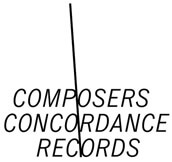
The opening piece, Villa-Lobos’ Bachianas Brasileiras No. 6, provides a more familiar beginning before the coming experimentation. I was especially impressed with the rugged and raw baroque quality to the bassoon and flute playing – if woodwinds had strings, they’d be gut, not steel on this track. This baroque / Brazilian feel is achieved by the force with which the rhythms are played and the clear shape and articulation of the melodic lines. The counterpoint truly comes alive, and it’s refreshing to hear this performed without the bassoon taking a backseat role.
Matthias Kronsteiner
The three solo bassoon pieces present very different compositional approaches and draw out different sounds from the instrument. Till Alexander Körber’s Seismograficische Reflexion goes from a single idea to a flurry of nervous activity to a contemplative sound almost approaching a melody several times. Its improvisatory character allows the bassoon to sit on some notes and move through other passages in a way that feels in the moment. While the piece could perhaps use more in the way of development and form, its transparent expression makes for a captivating composition. Christof Cech’s New Waves does well in creating a changing, jagged yet flowing groove. It goes from a feeling of perpetual motion to heavy basslines to brief moments of lyricism, often spinning larger ideas out of small motives. David Lang’s Press Release opens with a register jumping groove that gets a little funky without becoming cheesy crossover music, moves to a section of slurred moving notes in a higher register (the prettier David Lang sound) occasionally punctuated by low notes, and ends with more calm clear tones.
Mathias Kronsteiner’s playing on all these solo pieces is exceptional, with a technical mastery always put in service of musical expression. He’s not afraid to get a little ugly, honking out notes or verging on shrieking when the music demands it. That he can jump from this to a more reserved sound is testament to tremendous control over his instrument. Everything is played with a sense of line and shape generated by dynamic swells, breath accents, and clear, sometimes harsh articulations. One can feel the groove, but also a linear sense of development. This sense of shaped line, along with alternations between different timbres and registers gives the bassoon less of a monophonic sound and more the feeling of counterpoint. The pitch bends, split overtones, and multiphonics demonstrate the tremendous possibilities for the manipulation of sound. Kronsteiner’s tone possesses a deep resonance that gives especially the low register a full sound, and this sense he can hold his own solo. The booming in-your-face low notes make me wish I hadn’t gotten rid of those two 10” heavy-bass speakers I used to have in my trunk.
The duo with double bass on Gernot Wolfgang’s Low Agenda brings even more power to the bottom register resonance. This piece has a jazzy feel, and my favorite moment is when the two instruments reach a raucous groove with the bassoon growling out one of its notes. Much of the lines sound like written improvisations, and this gives a certain energy and spontaneity to the piece.
The duo with bass clarinet, Johannes Berauer’s Mizar A & B, is less heavily accented and has more of a European jazz feel in contrast to the other pieces, but still grooves with plenty of great interplay and counterpoint between the two instruments. My favorite moment is a 7/8 groove with lots of syncopation. Phillipp Sageder of Bauchklang adds human beat box over much of the piece, and this adds whole new interesting textures and rhythms to the music. Sageder’s skill and attention to sound quality make this not a novelty but an integral part of the music.
Despite my criticisms of the last track, Kronsteiner’s disc is just the kind of thing that classical music needs right now. Most pieces are in the 4-5 minute range, with a clarity of musical ideas that makes them easy to digest. The heavy rhythmic emphasis and unique grooves are inviting to people with different musical tastes, the emotion in the performance is compelling, and the experimentation is impressive and inspiring rather than esoteric. The recording is clear without being over-polished or losing the live feel of performance. The music has the feeling of letting loose, and I could see it being performed in many different venues to many different audiences. In this way, modified – music for bassoon succeeds in Composers Concordance Records’ goal of “good music recorded well pushing the boundaries of sound and composition.”
Matthias Kronsteiner, Modified, music for bassoon (Composers Concordance Records, August 2011) – Buy on Amazon
